Work Legally in Canada & Unlock Opportunities For a Brighter Future.
long-term family visits made simple.
Career Opportunities
Open doors to professional growth in Canada’s diverse industries.
Legal Authorization
Ensure compliance with Canadian laws while pursuing work opportunities.
Pathway to PR
Gain Canadian work experience that strengthens permanent residency applications.
Family Benefits
In many cases, spouses and children can accompany you.
Why Work Permits Matter
Career Opportunities
Open doors to professional growth in Canada’s diverse industries.
Legal Authorization
Ensure compliance with Canadian laws while pursuing work opportunities.
Pathway to PR
Gain Canadian work experience that strengthens permanent residency applications.
Family Benefits
In many cases, spouses and children can accompany you.
Will & Power of Attorney
Canada offers countless opportunities for skilled professionals, temporary workers, and international talents. A Work Permit allows you to work legally in Canada, gain valuable experience, and contribute to the Canadian economy.
At Legal Way, we guide applicants through every stage of the work permit process — from eligibility assessments to documentation and submission — ensuring a smooth pathway to working and thriving in Canada.
Our Services For You
Eligibility and Job Offer Assessment
Reviewing your employer’s job offer to ensure it meets Canadian immigration requirements, including verifying the job’s classification and whether the offer aligns with the criteria for work permit eligibility.
LMIA & Employer-Specific Permits
Offering guidance on obtaining Labour Market Impact Assessments (LMIAs) and employer-specific work permits, ensuring the employer’s request meets labor market needs and complies with Canadian immigration policies.
Open Work Permits
Assisting with applications for open work permits, including those for spouses of skilled workers or students, and post-graduation work permits, allowing flexibility in employment without a specific employer.
Application Preparation & Filing
Providing full support in drafting, preparing, and submitting your work permit application, ensuring all necessary documents are included and offering representation if any issues arise during the processing.
Eligibility and Job Offer Assessment
Reviewing your employer’s job offer to ensure it meets Canadian immigration requirements, including verifying the job’s classification and whether the offer aligns with the criteria for work permit eligibility.
LMIA & Employer-Specific Permits
Offering guidance on obtaining Labour Market Impact Assessments (LMIAs) and employer-specific work permits, ensuring the employer’s request meets labor market needs and complies with Canadian immigration policies.
Open Work Permits
Assisting with applications for open work permits, including those for spouses of skilled workers or students, and post-graduation work permits, allowing flexibility in employment without a specific employer.
Application Preparation & Filing
Providing full support in drafting, preparing, and submitting your work permit application, ensuring all necessary documents are included and offering representation if any issues arise during the processing.
Our working Process
Initial Assessment
Reviewing your eligibility based on job offer, LMIA, or open permit category.
Document Collection
Preparing proof of employment, qualifications, and financial support.
Application Submission
Filing a complete and strong application with immigration authorities.
Post-Approval Guidance
Advising on renewals, extensions, and transition to permanent residency.
Why Choose Legal Way
Tailored Guidance
Every applicant’s career and immigration needs are unique.
Strong Documentation
We help build a strong application for higher approval chances.
Trusted Experience
Expertise across employer-specific, LMIA-based, and open permits.
Future-Oriented
We align your work permit with long-term immigration goals.
Our Clients Feedback

The most learned lawyer i have ever met. He is having good command over immigration area and real estate deals. Quite and nice work done by him. He is committed lawyer to provide deliverables timely. Efficient one i must say.
- Shrey Shah

Extremely satisfied with their service. They are very professional in their work and they put emphasis on every minute aspects while applying for any type of visa. I applied for my parents visitor visa as a student through them as I wanted to invite my parents for convocation ceremony and got approval within 15 days.
I definitely recommend to consider this place if you are looking for any service related to immigration as they are very reliable and have a great expertise. Thank you Legal Way Professional Corporation for helping me out in getting my parents visitor visa and making my dream of inviting my parents to Canada a reality!!
- Kuntal Shah

I really appreciate the whole team ,especially Mr. Rajat who helped me with every journey of immigration from work permit to permanent residency. They respond to your call very quickly. Their work is transparent as they give you full access to your account so that you get to know what’s going on in your portal. In a nutshell, they provide excellent service to their clients.
- Navjot Kaur

I hired Mr. Chauhan for the application of my study permit. He heard my concerns with intent and proposed appropriate solutions. The staff is courteous and diligent; they always return my calls and take my case seriously. It was a great experience.
- Karnail SIngh

Legal way provide the most genuine and honest services around the town. I would recommend everyone seeking immigration or other law related services must visit them and discuss their queries. The staff is very helpful and amicable. Rajat Chauhan the owner himself is a great person and always happy to serve everyone.
- Tarandeep SIngh

I am extremely impressed with their level of service. From start to finish, the team at Legal Way was very professional, knowledgeable, and supportive, making the entire process smooth. They went above and beyond in helping me for my parents’ visitor visa.
Thanks to their hard work and dedication, my parents’ visa application got approved in just 12 days. I am truly grateful to the entire team for their exceptional service and would highly recommend them to anyone in need of visa assistance.
- Utsav Sharma
Start your Canadian work journey with trusted legal help.
📞 Contact us today to begin your Work Permit Application.

